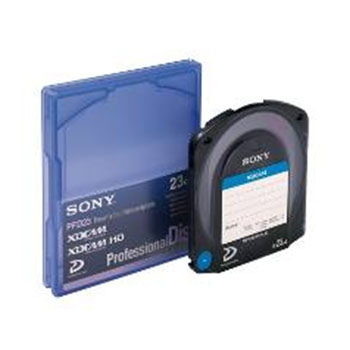 HDCAM
HDCAM
HDCAM is a version of Betacam. Digital Betacam, or Digi Beta, is a video digital recording format in standard definition, while the HDCAM is the high definition version of it. HDCAM was introduced in 1997, and it was the first HD broadcast format at the time.
HDCAM SR (Superior Resolution) is a newer version of HDCAM, introduced in 2003. The HDCAM SR is more commonly used in HD television news today as a master recording format, although television shows across the world still use HDCAM for shooting.
Like other Betacam tapes, the HDCAM is colour coded – they are black with an orange top, and HDCAM SR tapes are black with a cyan top.
One of the major differences between the two types of HDCAM is that the HDCAM requires a lower data rate to record the HD footage, thereby squishing the image. The HDCAM SR does not squish the image, allowing all of the HD data to be recorded. It achieves this with a smaller particle density that allows more of a recording density.
The HDCAM carries more data than the XDCAM, discarding less and affecting image quality and colour less. Continue reading more about HDCAM >>.
[text-box width=”100%” align=”center”]
Have a video transfer question?
We’re happy to help, feel free to drop us a line.
[/text-box]
 XDCAM
XDCAM
The XDCAM comes in a variety of generations, including the XDCAM HD422, XDCAM SD, XDCAM HD and XDCAM EX. Each of these generations is meant for a specific use and budget, and all have different specifications when it comes to recording media types and frame size. For example, the HD422 has double the chroma-resolution as other formats, while the DS does not support MPEG HD, whereas all of the other types of XDCAM do.
Both XDCAM and HDCAM are expensive HD formats, ranging into the tens of thousands of dollars.
When choosing a high definition video camera, there are a number of things you should consider so that your money is invested wisely:
Make sure the camera and format is compatible with your computer so that shooting and editing are easy to handle.
While everyone will have their own and sometimes differing opinion, ask around and talk to industry professionals to learn which camera and format may best suit your needs, especially if you are new to the industry.
Decide on which features you need. Don’t spend money on a camera that comes with all of the bells and whistles if you won’t use them. Instead, focus on choosing an HD camera and format whose manufacturers put in the effort to make the features you will use exceptional. Continue reading more about XDCAM >>
